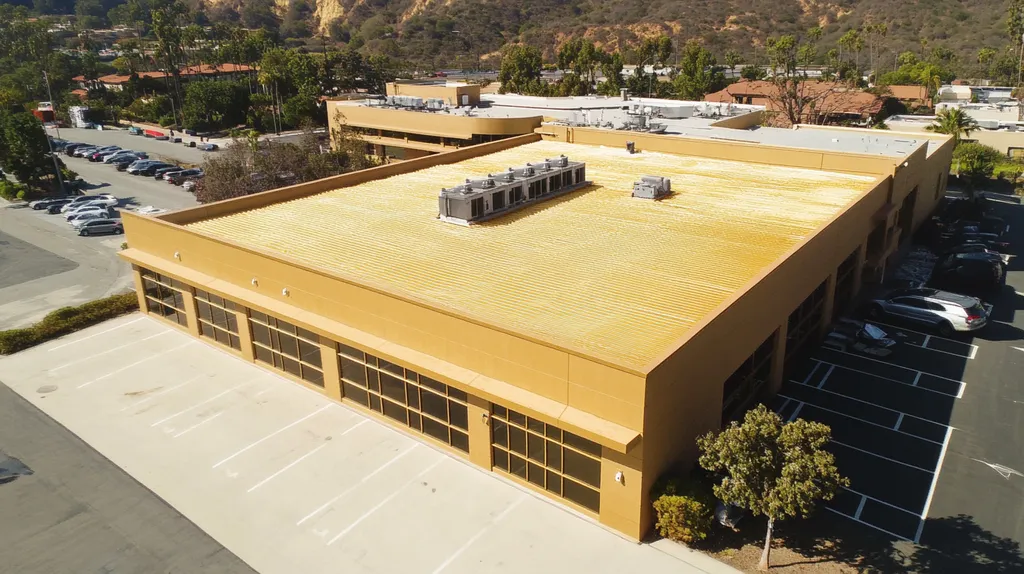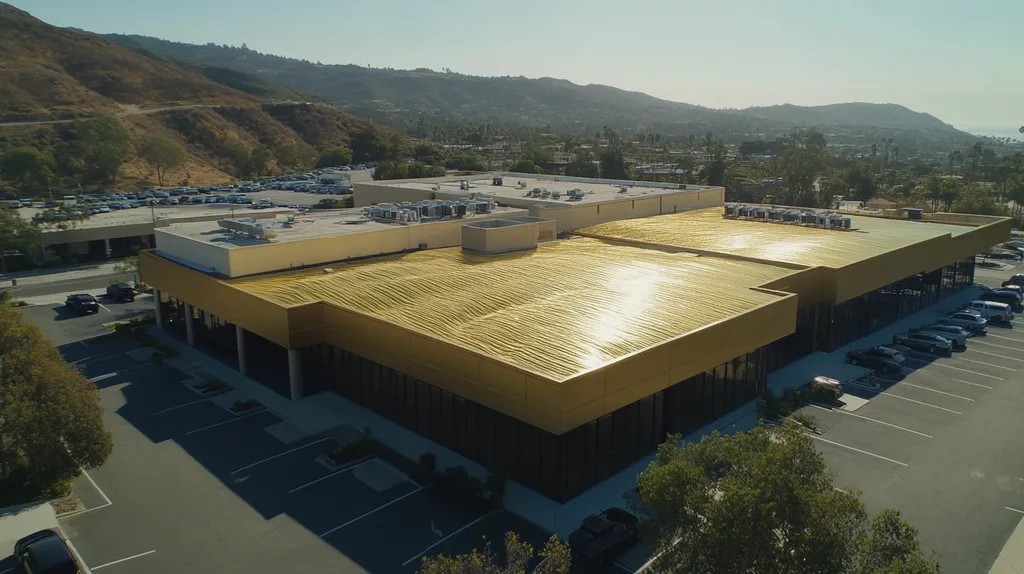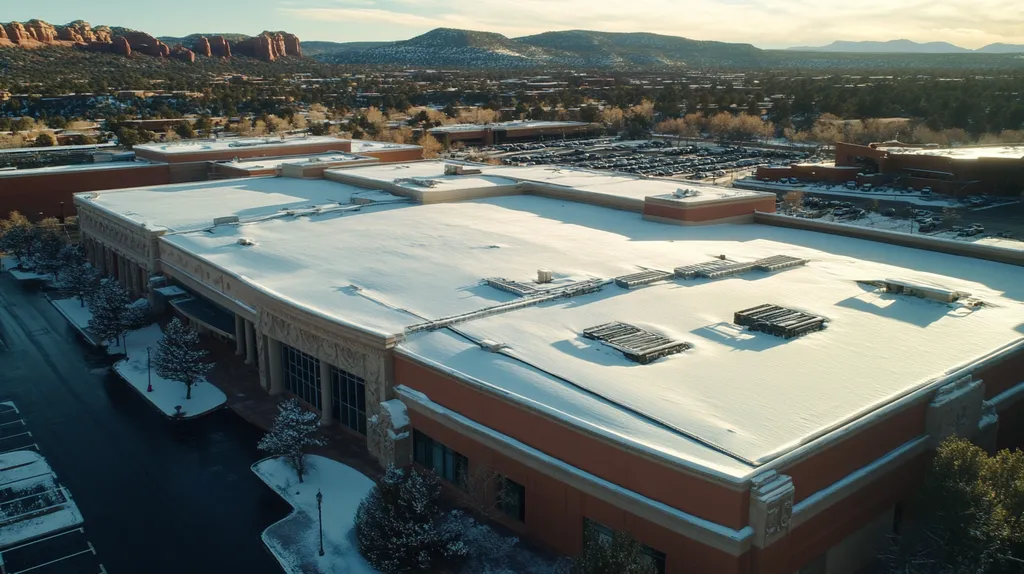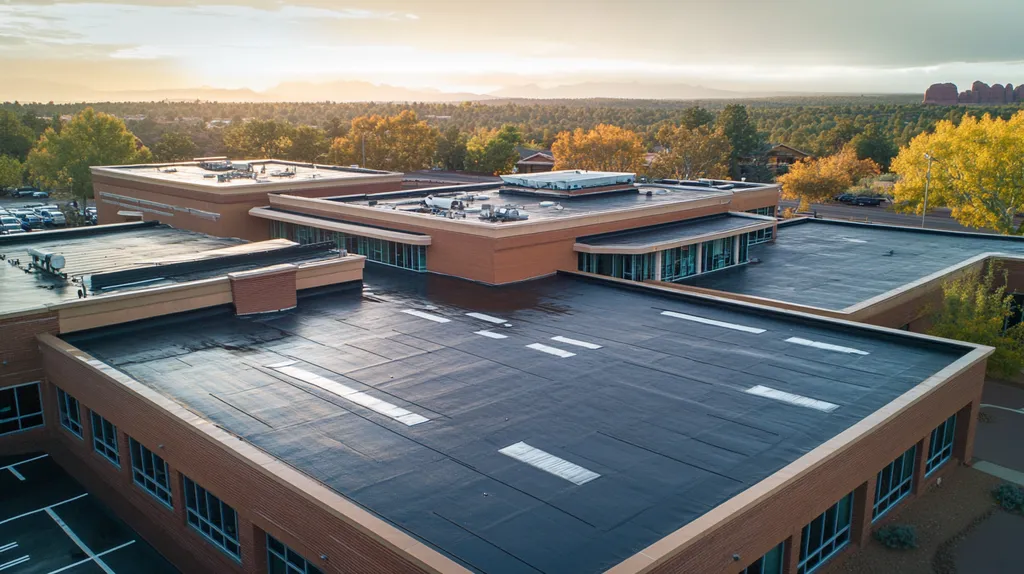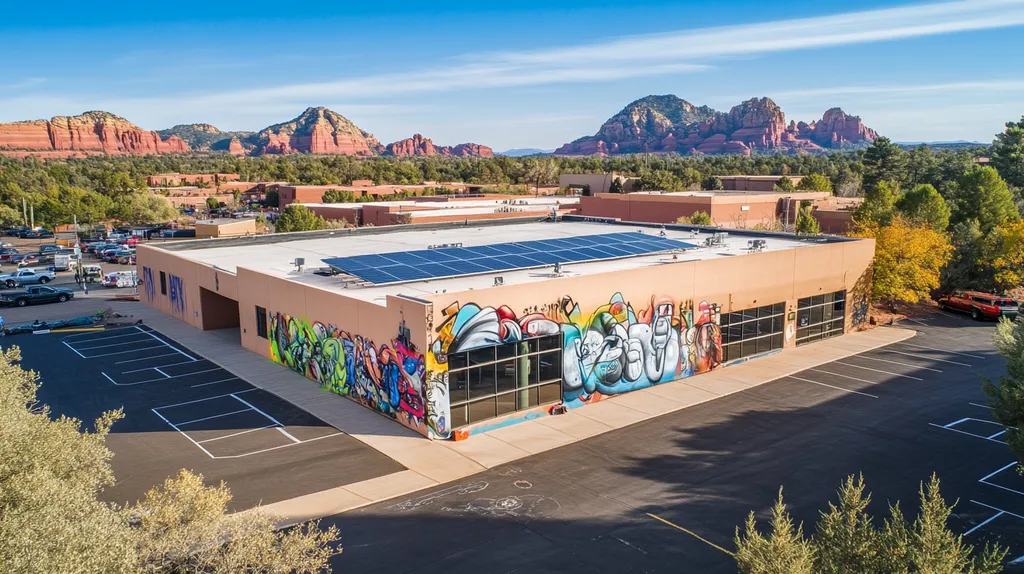Welcome to today’s Battle Royale featuring two roofing heavyweights: “TPO” in the east corner versus “EPDM” in the west!
Tonight’s showdown pits these contenders against each other across six punishing rounds designed to test every aspect of their performance for peak season commercial roof repairs.
At stake? Millions in potential costs, decades of building protection, and the critical performance demands of modern commercial and industrial facilities.
Our professional judging panel will evaluate each round on technical merit, real-world performance, and value delivery. After all six rounds, we’ll declare our ultimate champion.
Ladies and gentlemen, facility managers and building owners… it’s time to rumble!
ROUND 1: INITIAL COSTS & INSTALLATION
During peak repair season, commercial property owners face critical decisions about roofing materials and installation timing. Summer’s clear weather creates optimal conditions for identifying problems and completing installations efficiently, making it the ideal time to evaluate roofing options.
The choice between TPO and EPDM systems can significantly impact both immediate costs and long-term facility operations. Making an informed decision requires careful consideration of material expenses, installation requirements, and project timelines.
Material Expenses
Initial material costs represent a significant portion of any commercial roofing project. TPO membranes typically cost 15-25% less per square foot than EPDM, making them an attractive option for properties with strict budget constraints.
EPDM materials, while commanding a higher upfront price, often demonstrate superior durability and weather resistance. This increased longevity can offset the initial cost difference through reduced replacement frequency.
When comparing material thickness options, TPO generally offers more standardized pricing across different mil sizes. EPDM pricing can vary more significantly based on thickness and reinforcement options.
For pure material cost considerations, TPO holds the ADVANTAGE.
Installation Complexity
Installation efficiency directly impacts labor costs and project duration. In optimal summer conditions, roofing work proceeds smoothly without weather-related complications that could compromise installation quality. (source: Integrity Roofers)
TPO installation involves heat-welded seams that create strong, uniform bonds. This mechanized process typically requires fewer crew members and reduces the possibility of installation errors.
EPDM installation demands more manual labor, particularly around seams and flashings. The adhesive-based installation process requires precise temperature control and longer curing times.
Given its more straightforward installation process, TPO claims the ADVANTAGE.
Project Timeline
Commercial roofing projects must balance quality installation with minimal business disruption. TPO installations typically complete 20-30% faster than comparable EPDM projects due to their mechanized seaming process.
EPDM installations require additional time for proper adhesive application and curing. This extended timeline can increase exposure to weather risks during the installation phase.
Weather considerations affect both systems, but TPO’s faster installation process reduces the window of vulnerability. This efficiency becomes particularly valuable during peak season when weather conditions are optimal.
TPO’s faster completion time earns it the ADVANTAGE.
ROUND 1 WINNER: TPO
ROUND 2: DURABILITY & LIFESPAN
During peak repair season, property owners must carefully evaluate roofing material durability to ensure long-term protection. With fall’s moderate temperatures creating ideal installation conditions, understanding how different materials perform over time becomes crucial for making informed decisions that impact building protection for decades.
Studies show that premature roofing failures can increase lifetime maintenance costs by up to 40%. The choice between TPO and EPDM significantly influences both immediate performance and long-term facility protection.
Weather Resistance
TPO roofing systems excel in UV resistance and heat reflection, making them particularly effective in high-temperature environments. Their heat-welded seams create a monolithic surface that maintains integrity through thermal cycling.
EPDM demonstrates superior flexibility in cold conditions and maintains its physical properties across a wide temperature range. However, its dark surface typically absorbs more heat, which can accelerate aging in hot climates.
While both materials offer strong weather resistance, TPO’s superior heat reflection and seam strength earn it the ADVANTAGE.
Physical Durability
TPO membranes offer excellent resistance to tears, impacts, and punctures. Their reinforced composition helps prevent damage from foot traffic and routine maintenance activities.
EPDM provides good flexibility and stretch resistance but can be more susceptible to punctures and mechanical damage. Its softer composition requires more careful handling during maintenance.
For overall physical durability, TPO claims the ADVANTAGE.
Expected Lifespan
Fall represents the peak season for commercial roofing installations, as moderate temperatures and stable conditions support optimal material performance. Proper installation during these conditions helps maximize system longevity. (source: Blue Frog Roofing)
TPO roofing systems typically last 20-25 years when properly installed and maintained. Their performance remains consistent throughout their service life, with minimal degradation of protective properties.
EPDM systems can exceed 30 years of service when properly maintained. Their simple composition and proven track record make them a reliable choice for long-term performance.
Given its longer proven lifespan, EPDM takes the ADVANTAGE.
ROUND 2 WINNER: TPO
ROUND 3: PERFORMANCE FACTORS
During peak repair season, commercial property owners must evaluate critical performance factors that affect their building’s protection and operating costs. Making informed decisions about roofing systems can mean the difference between decades of reliable service and premature failure requiring costly repairs.
Both TPO and EPDM systems offer distinct performance advantages that become especially relevant during summer’s intense UV exposure and thermal cycling. Understanding these differences helps property owners maximize their roofing investment.
Durability Under Extreme Conditions
TPO membranes demonstrate exceptional resistance to UV radiation and chemical exposure, maintaining their protective properties even in harsh environments. Their reinforced construction helps prevent tears and punctures from mechanical stress.
EPDM systems excel in maintaining flexibility across extreme temperature ranges, particularly in cold climates. Their elastomeric properties allow them to accommodate building movement without compromising integrity.
While both materials offer strong durability characteristics, TPO’s superior UV and chemical resistance earns it the ADVANTAGE.
Energy Efficiency
TPO’s highly reflective white surface dramatically reduces heat absorption, lowering cooling costs during peak summer months. This reflectivity maintains its effectiveness throughout the membrane’s service life, providing consistent energy savings.
Traditional black EPDM absorbs significant solar heat, which can increase cooling demands and energy costs. While white EPDM options exist, they typically don’t match TPO’s reflective performance.
TPO’s superior solar reflectance and energy-saving potential gives it a clear ADVANTAGE.
Maintenance Requirements
TPO roofing systems feature heat-welded seams that create a monolithic surface requiring minimal maintenance. Their smooth surface allows for easy cleaning and inspection, reducing long-term maintenance costs.
EPDM systems rely on adhesive-based seams that may require more frequent inspection and maintenance. While the material itself is durable, seam degradation can lead to increased maintenance needs over time.
Given its lower maintenance demands and more reliable seam technology, TPO claims the ADVANTAGE.
ROUND 3 WINNER: TPO
ROUND 4: MAINTENANCE REQUIREMENTS
Commercial roofing maintenance directly impacts both operational costs and building protection. Industry data shows that proactive maintenance can extend a roof’s lifespan by 50% while reducing overall facility costs by up to 25% annually. Understanding the maintenance requirements for TPO and EPDM systems helps property owners optimize their maintenance budgets and prevent costly emergency repairs.
Maintenance Frequency
TPO roofing systems typically require bi-annual inspections to maintain optimal performance. Their heat-welded seams and chemical resistance reduce the need for frequent maintenance interventions, making them cost-effective for properties with limited maintenance resources.
EPDM systems demand quarterly inspections to monitor seam integrity and detect potential adhesive failures. Their reliance on adhesive bonds requires more frequent evaluation, particularly in areas experiencing extreme temperature fluctuations.
The reduced inspection and maintenance requirements of TPO systems earn them the ADVANTAGE in this category.
Repair Complexity
TPO repairs can typically be completed quickly using heat-welding techniques that create seamless bonds. Most repairs require minimal surface preparation and can be executed with standard roofing tools, reducing repair costs and facility disruption.
EPDM repairs often involve more complex procedures, including careful surface preparation and adhesive application. These repairs require specific temperature and weather conditions for proper curing, which can extend repair timelines.
Given its simpler repair procedures and faster completion times, TPO claims the ADVANTAGE.
Long-term Durability
The mild temperatures and stable conditions of autumn create an ideal environment for roofing work, allowing materials to properly settle and bond. This timing particularly benefits both TPO and EPDM installations by ensuring optimal curing conditions. (source: All That Roofing)
TPO systems maintain their structural integrity and reflective properties throughout their service life. Their reinforced composition resists physical damage and maintains consistent performance with minimal degradation.
EPDM systems demonstrate excellent resistance to weathering and maintain flexibility over time. However, their seams can become vulnerable points requiring increased maintenance attention as the system ages.
TPO’s consistent performance and reduced maintenance needs over time earn it the ADVANTAGE.
ROUND 4 WINNER: TPO
ROUND 5: SUSTAINABILITY CREDENTIALS
During peak roofing season, property owners must carefully evaluate the environmental impact of their roofing choices. The surge in summer installations makes sustainability considerations particularly critical as decisions made during this busy period affect building performance for decades.
Recent data shows sustainable roofing choices can reduce building energy consumption by up to 30% while minimizing environmental impact. Understanding how TPO and EPDM systems contribute to sustainability goals helps optimize both environmental and financial outcomes.
Environmental Impact
Peak season installations require careful consideration of material environmental impacts. TPO membranes contain no plasticizers or chlorinated ingredients, resulting in minimal chemical offgassing during their service life.
The highly reflective surface of TPO significantly reduces building cooling loads, with surfaces remaining up to 60°F cooler than dark membranes. This cooling effect directly translates to reduced energy consumption and lower carbon emissions.
EPDM’s dark surface absorbs more solar energy, increasing cooling demands in warm climates. While white EPDM options exist, they typically don’t match TPO’s long-term reflective performance.
Given its superior environmental profile and energy-saving potential, TPO claims the ADVANTAGE.
Resource Efficiency
Summer’s high installation volumes make material efficiency crucial for sustainable operations. TPO systems typically require less material thickness to achieve desired performance, reducing raw material consumption.
TPO’s mechanically-attached installation method minimizes adhesive use compared to fully-adhered systems. This reduces volatile organic compound (VOC) emissions during installation and throughout the roof’s lifespan.
EPDM installations often require more adhesives and primers, increasing chemical usage. However, EPDM’s simpler chemical composition makes it easier to recycle at end-of-life.
For overall resource efficiency, TPO earns the ADVANTAGE.
Building Integration
During peak season, commercial roofing decisions directly impact building performance. TPO’s reflective surface reduces urban heat island effects while supporting rooftop solar installations without additional modifications. (source: JobNimbus)
TPO systems integrate seamlessly with modern building automation systems, allowing for precise monitoring of roof performance and early detection of potential issues. This proactive approach extends service life and reduces material waste.
EPDM offers similar integration capabilities but may require additional modifications for solar installations. Its darker surface can interfere with building cooling strategies.
TPO’s superior integration capabilities earn it the ADVANTAGE.
ROUND 5 WINNER: TPO
ROUND 6: SPECIALIZED APPLICATIONS
During peak repair season, specialized roofing applications demand careful material selection to ensure long-term performance. Industry data shows that 40% of commercial roof failures stem from mismatched materials for specific use cases, leading to premature system deterioration and increased maintenance costs.
Both TPO and EPDM offer distinct advantages for specialized applications, from high-traffic areas to complex architectural designs. Understanding these differences helps property owners optimize their roofing investment based on specific building requirements.
Reflective Roofing Applications
Summer installations make reflective properties particularly crucial for energy management. TPO’s highly reflective surface can reduce roof temperatures by up to 60°F compared to dark surfaces, directly impacting cooling costs during peak demand periods.
TPO maintains its reflective properties throughout its service life with minimal degradation. This consistent performance helps maintain energy efficiency benefits even as the system ages.
EPDM’s traditional black surface absorbs significant solar heat, increasing cooling demands. While white EPDM options exist, they typically don’t match TPO’s long-term reflective performance.
Given its superior reflective properties and energy performance, TPO claims the ADVANTAGE.
High-Traffic Installations
Commercial roofs frequently experience maintenance traffic and equipment servicing. TPO’s reinforced composition provides good resistance to punctures and tears, but can show wear patterns in heavily trafficked areas.
EPDM’s greater elasticity and flexibility make it particularly suited for high-traffic areas. The material’s ability to absorb impact and resist tearing provides superior durability under frequent foot traffic.
EPDM’s proven performance in high-traffic applications earns it the ADVANTAGE.
Complex Geometries
Properties with intricate roof designs require materials that can conform to irregular shapes while maintaining watertight integrity. TPO’s heat-welded seams create strong, uniform bonds around complex details and penetrations.
TPO’s installation method allows for precise fitting around irregular shapes without compromising seam strength. This reduces the risk of leaks at critical transition points.
EPDM requires more careful detailing around complex geometries, with multiple seams increasing potential failure points. While effective when properly installed, the adhesive-based seaming process demands greater attention to detail.
TPO’s superior seaming capabilities and installation flexibility earn it the ADVANTAGE.
ROUND 6 WINNER: TPO
AND THE WINNER IS…
After six grueling rounds of technical evaluation, we have our verdict in this heavyweight championship of commercial roofing materials!
With a commanding 5-1 victory across our performance categories, TPO emerges as our undisputed champion! This modern contender dominated with superior cost efficiency, faster installation times, and outstanding sustainability credentials. Its heat-welded seams and exceptional UV resistance proved nearly impossible to beat.
But don’t count EPDM out of the fight entirely! This seasoned veteran still packs a powerful punch in high-traffic areas and delivers championship-caliber performance in cold-weather applications. Its proven 30+ year lifespan and superior flexibility make it a formidable choice for specific building challenges.
Remember, folks – every building brings its own unique conditions to the ring. Local climate, roof geometry, and facility requirements can all affect material performance. While TPO claims the title belt tonight, your specific situation may favor a different champion.
Professional consultation remains essential for selecting the perfect roofing contender for your corner. Always partner with qualified experts who can evaluate your facility’s specific needs and conditions.
In the high-stakes arena of commercial roofing, the true victory comes not from following the crowd, but from matching your building’s unique requirements with the right material’s winning attributes. Now that’s a knockout combination!
FREQUENTLY ASKED QUESTIONS
Q. What are the initial costs for a commercial roof?
A. Initial costs vary by material. TPO generally costs 15-25% less than EPDM. Budget-conscious property owners should evaluate both long-term durability and upfront costs, ensuring they choose the right system for their needs.
Q. How does the durability of EPDM compare to TPO for an industrial roof?
A. EPDM generally lasts longer, exceeding 30 years with proper maintenance. However, TPO excels in UV resistance and overall performance for extreme conditions, making it important to consider the specific requirements of your industrial building.
Q. Which material is more energy-efficient for a commercial roof?
A. TPO is highly reflective, reducing heat absorption. This reflective surface significantly lowers cooling costs during summer months, making it a more energy-efficient option compared to EPDM, particularly in warmer climates.
Q. What are the maintenance requirements for a commercial roof?
A. TPO requires bi-annual inspections due to its lower maintenance needs, while EPDM demands quarterly inspections. Regular evaluations are essential for both, but TPO typically incurs less long-term maintenance costs.
Q. How do TPO and EPDM compare in terms of sustainability?
A. TPO has an advantage with minimal chemical offgassing and superior reflectivity, reducing energy consumption. While EPDM is recyclable, its darker surface contributes to higher cooling demands, impacting overall sustainability.
Q. Can TPO and EPDM handle high-foot traffic areas on an industrial roof?
A. While TPO is durable, EPDM’s elasticity better absorbs impacts, making it more suited for high-traffic areas. Carefully assess your roof’s usage to select the appropriate material for long-term performance.
Q. What is the best season for commercial roof installation?
A. Fall offers ideal installation conditions with moderate temperatures, making it a peak season for roofing projects. Proper installation during this time can enhance the performance and lifespan of both TPO and EPDM systems.


